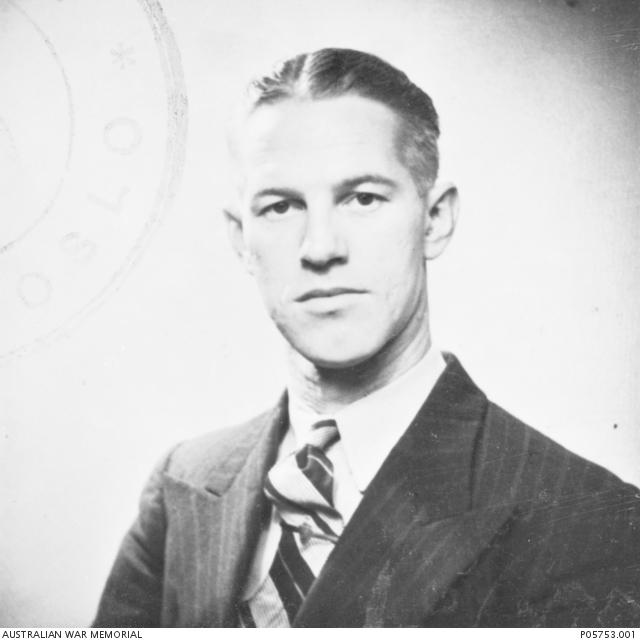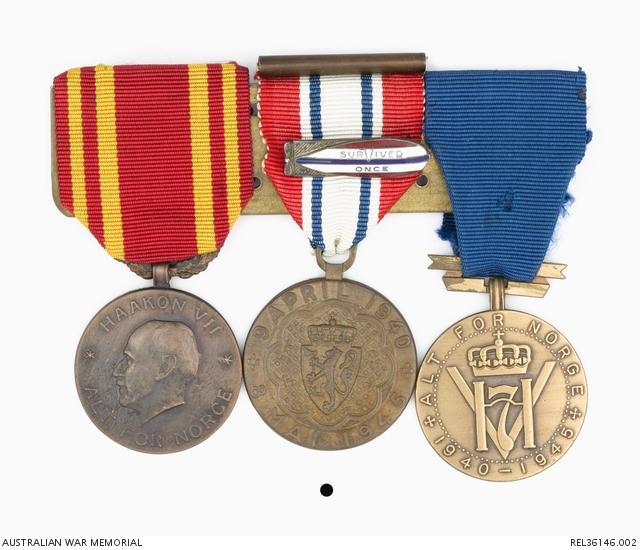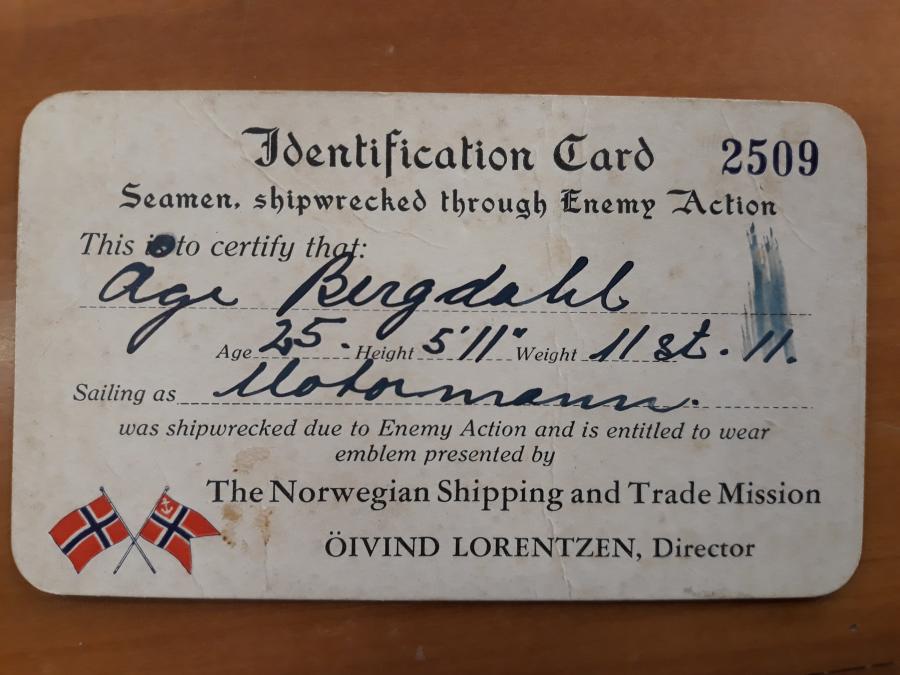‘Survived Once’ : Aage Bergdahl, MV Scotia
During the Second World War the Allied war effort relied heavily on the Merchant Navy transporting essential cargo around the world. Norwegian merchant seaman, Aage Berdahl served on ships operating between the United Kingdom and Australia and in early 1943 he signed onto the Norwegian tanker MV Scotia.

Aage Bergdahl
In late 1943 the Scotia was on charter to the Vacuum Oil Company with a cargo of 13,800 tons of diesel oil for British ships in Melbourne.
Just after sunset on 27 November 1943, the Scotia was torpedoed starboard side by Japanese submarine I-37. The submarine, commanded by Commander Kiyonari Otani, had patrolled the Indian Ocean from mid-1943 and earlier that year had attacked and damaged the British armed tanker San Ernesto (which was abandoned by the crew and later ran aground), and sank the American Liberty ship USS Henry Knox and the Greek merchant vessel, Faneromeni.
After the first torpedo hit the Scotia, a distress call was sent and the crew abandoned ship. About 15 minutes later another torpedo hit the engine room and the ship broke in two with the stern sinking.
Bergdahl swam to the nearest lifeboat, which contained the captain and other officers and crew. As there was no room for him he was ordered to another lifeboat. He swam behind the Scotia and found room on one of the other two lifeboats.

Aage Bergdahl’s medals with his “survived once” badge, acknowledging he survived a shipwreck due to enemy action, presented by the Norwegian Shipping and Trade Mission.
When I-37 surfaced near the captain’s lifeboat, the other lifeboats escaped notice, slipping into the darkness where the remains of the Scotia helped hide them from view. The Japanese took the captain prisoner before opening fire on his lifeboat, killing all but one man who managed to throw himself overboard and avoided detection. After the submarine left he returned to the lifeboat and spent three days with the ship’s dog who had also survived. This lifeboat became separated from the other two.
Two Catalina aircraft located the ship after the distress call was received and dropped a message to the survivors to tell them HMS Okapi would rescue them. The Okapi reached the lifeboats on 29 November, then searched for the captain’s lifeboat, which was discovered the following afternoon. They later found a raft with the body of the 1st Engineer, who had been shot by Japanese machine-guns. The radio officer had survived the sinking and was seen clinging to a door. A Catalina dropped a dingy to him and he was seen swimming for it, but the dingy was later found empty and he was never found.
HMS Okapi returned to base at Addu Atoll, Maldive Islands, and a few days later Bergdahl and the other survivors that were well enough were taken by a French ship to Colombo. The men were given lodgings at the local seamen's club and some clothes.

Aage Bergdahl’s identification card, certifying he could wear the “survived once” emblem (PR03785)
Bergdahl continued to serve in the Merchant Navy for the rest of the war; fortunately none of his other ships were attacked.
Further information:
https://www.wrecksite.eu/wreck.aspx?168597